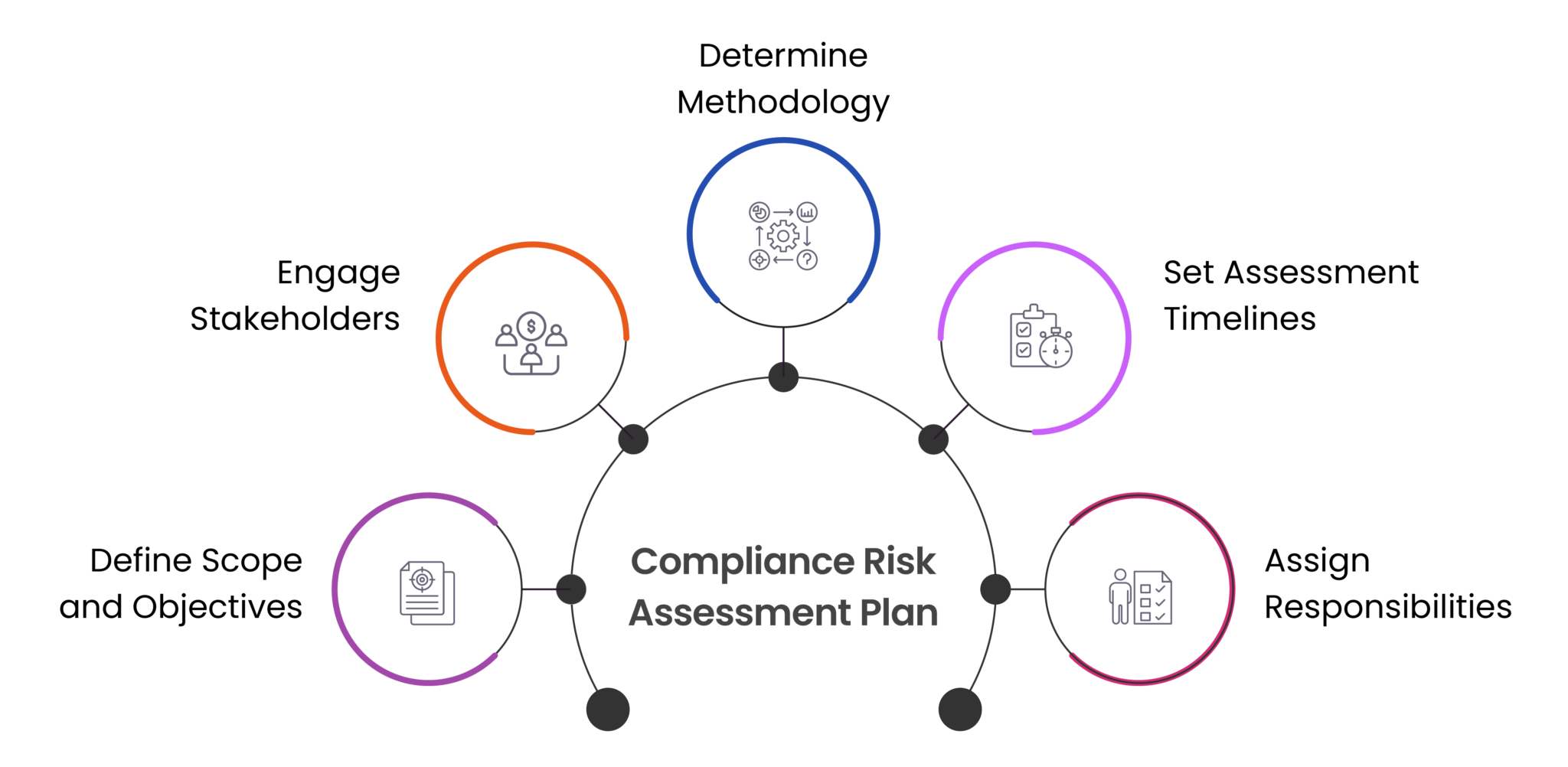In the life sciences industry, maintaining compliance with an evolving regulatory environment is crucial to ensuring patient safety, data integrity, and corporate reputation. Compliance risk assessment serves as a foundational tool for identifying, analyzing, and managing compliance risks.
In this blog, we’ll explore the key components of an effective compliance risk assessment in life sciences, covering the essential aspects of risk management, regulatory compliance, and strategies for mitigating compliance risks.
What is Compliance Risk Assessment?
Compliance risk assessment refers to the systematic process of identifying, evaluating, and prioritizing risks related to regulatory compliance in the life sciences industry. It involves determining potential areas where an organization’s activities may not align with legal, regulatory, or ethical standards and developing appropriate strategies to mitigate those risks.
In the life sciences sector, this process is critical for ensuring adherence to regulations such as the U.S. Food and Drug Administration (FDA) requirements, Health Insurance Portability and Accountability Act (HIPAA), Anti-Kickback Statute, False Claims Act, and others. Failure to conduct a compliance risk assessment can result in substantial financial penalties, reputational damage, and negative impacts on patient safety.
Importance of Conducting a Compliance Risk Assessment
The life sciences industry is characterized by stringent regulations and ethical expectations. Conducting a compliance risk assessment helps organizations:
- Recognizing areas that may lead to non-compliance or violation of regulations.
- Understanding the likelihood of a compliance issue and its potential impact.
- Implementing measures to reduce the identified risks to an acceptable level.
- Focusing resources on high-risk areas, ensuring efficient compliance management.
Key Components of an Effective Compliance Risk Assessment
Risk Identification: The first step in the compliance risk assessment process is to identify the types of compliance risks your organization may face. This involves understanding the regulatory environment, corporate policies, and industry standards.
In life sciences, compliance risks include issues related to interactions with healthcare professionals (HCPs), product labeling, marketing practices, data privacy, and adverse event reporting. Conducting interviews, reviewing policies, and analyzing past compliance issues are some of the ways to identify potential compliance risks.
Risk Analysis and Evaluation: Once risks are identified, the next step is to evaluate and analyze them. Regulatory risk analysis involves assessing the probability of the risk occurring and its potential impact on the organization. A compliance risk matrix is often used to map risks based on their likelihood and severity, helping to prioritize the risks that need immediate attention.
Analyzing the level of the risk: involves understanding the regulatory implications, potential fines, and the impact on patient safety. This helps organizations make informed decisions on how to manage compliance risks effectively.
Risk Prioritization and Control Measures: After evaluating the risks, it’s essential to prioritize them based on their level of impact. High-risk areas should be addressed immediately to prevent regulatory violations. Control risks by implementing measures such as internal audits, compliance training programs, and technology-driven monitoring tools.
Risk mitigation: strategies should focus on reducing the likelihood of non-compliance and minimizing its impact. For instance, automating data reporting processes can reduce errors and ensure timely submissions to regulatory authorities.
Compliance Risk Assessment Framework: Developing a robust compliance risk assessment framework is essential for standardizing the process across the organization. The framework should outline the steps for identifying, evaluating, and mitigating risks, and provide guidelines for consistent documentation.
The framework should also include a compliance risk assessment plan that details how often assessments will be conducted, which departments are responsible, and the methodologies used for assessment. This plan helps in maintaining an ongoing risk assessment process and ensures compliance efforts are up to date.
Cross-Functional Collaboration: An effective compliance risk assessment requires input from various functions within the organization, including legal, regulatory, medical affairs, and sales. Managing compliance risks becomes more efficient when different departments work together to share insights and data.
How to conduct a compliance risk assessment?: Engaging key stakeholders in the assessment process is crucial. Compliance officers, department heads, and subject matter experts should collaborate to ensure that all potential risks are captured and assessed comprehensively.
Documentation and Reporting: Documenting the entire compliance risk assessment process is crucial for demonstrating due diligence to regulatory authorities. Accurate and detailed records help in tracking the effectiveness of implemented controls and support future risk evaluations.
Compliance risk evaluation: reports should include identified risks, their assessment outcomes, control measures, and timelines for mitigation. This documentation serves as an essential reference for regulatory audits and internal reviews.
Ongoing Monitoring and Review: Compliance risks are not static; they evolve with changes in regulations, business operations, and industry trends. Continuous monitoring and periodic reviews of the compliance risk assessment framework are necessary to adapt to new challenges.
Implementing a compliance risk assessment plan that includes regular monitoring ensures that the organization is always aware of its risk exposure and can take proactive measures to mitigate it. Automation tools can be particularly helpful in tracking compliance metrics and generating alerts for potential issues.
Compliance Risk Assessment Goals
The primary goals of a compliance risk assessment in life sciences are:
- Ensuring regulatory compliance: Staying aligned with U.S. regulations and industry standards to prevent legal and financial penalties.
- Enhancing risk management in life sciences: Improving the organization’s ability to predict, manage, and mitigate compliance risks.
- Promoting a culture of compliance: Fostering an environment where all employees are aware of compliance obligations and work proactively to maintain them.
Potential Compliance Risks in Life Sciences
Understanding the types of compliance risks in life sciences helps organizations prepare effectively. Some common risks include:
- HCP Engagement Risks: Violations of Anti-Kickback Statute or failure to determine fair market value for services rendered by HCPs.
- Data Privacy Risks: Non-compliance with HIPAA regulations concerning patient data protection.
- Product Marketing Risks: Off-label promotion or misleading advertising of products.
How to Develop a Compliance Risk Assessment Plan?
A compliance risk assessment plan should outline the objectives, processes, timelines, and stakeholders involved in the assessment. The plan must include:
- Determine which areas of the business will be assessed and what the objectives are (e.g., reducing financial penalties, ensuring compliance with new regulations).
- Identify the key individuals who will contribute to the assessment process.
- Choose methods for risk identification and analysis, such as surveys, interviews, or data analysis.
- Specify when the assessments will be conducted (e.g., quarterly, annually).
- Assign roles for conducting the assessment, analyzing results, and implementing mitigation measures.
Solutions for Compliance Risk Management
To effectively manage compliance risks in the life sciences industry, organizations can adopt several solutions:
- Technology-Driven Compliance Tools: Utilizing compliance monitoring software can enhance accuracy in risk assessments and monitoring. Automated tools provide real-time insights into compliance gaps, helping organizations take corrective actions quickly.
- Regular Training Programs: Educate employees on regulatory requirements, internal policies, and best practices. This is a proactive approach to prevent compliance issues before they occur.
- Internal Audits and Reviews: Regular audits help identify non-compliance issues and assess the effectiveness of current mitigation strategies.
Conclusion
An effective compliance risk assessment is essential for ensuring that life sciences companies maintain their regulatory compliance, safeguard patient safety, and protect their corporate reputation. By following a structured compliance risk assessment framework, identifying potential risks, implementing control measures, and continuously monitoring compliance activities, organizations can navigate the complex regulatory landscape successfully.
Whether you are looking to understand how to conduct a compliance risk assessment or how to develop a compliance risk assessment plan, remember that an ongoing, proactive approach is crucial. Embrace collaboration, utilize technology, and focus on continuous improvement to manage compliance risks effectively in the dynamic life sciences industry.



